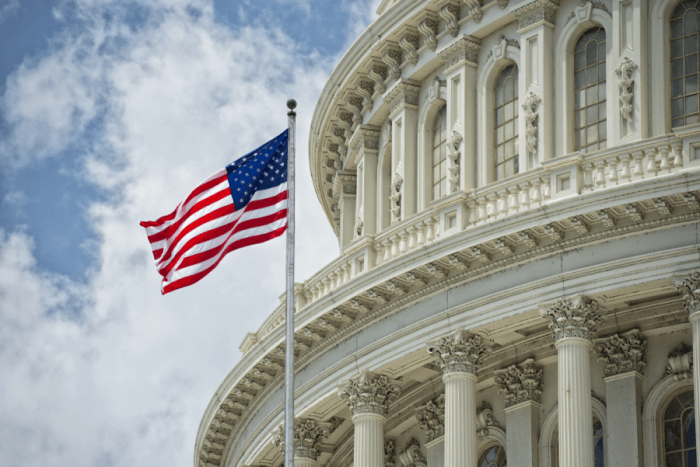What You Need to Know
In response to the global coronavirus pandemic, the U.S. government has passed several significant relief bills in March and April of 2020. Here is an overview:
Phase 1 – The Coronavirus Preparedness and Response Supplemental Appropriations Act was signed into law on March 6, 2020 and allocated $8.3 billion to help stop the spread of COVID-19.
Phase 2 – The Families First Coronavirus Response Act (FFCRA) was signed into law on March 18, 2020 and allocated $3.4 billion in relief to help with unemployment costs, paid sick leave, student meal programs and the insurance costs for COVID-19 testing.
Phase 3 – The CARES Act, Coronavirus Aid, Relief and Economic Security Act, is an economic-rescue package signed into law on March 27, 2020. It allocated over $2 trillion to help individuals, small businesses and larger corporations offset the economic impact of the collective loss of work and indefinite disruption of daily life. We will outline some of the main provisions below.
Phase 3.5 – A supplemental stimulus bill was signed on April 24, 2020 and allocated $484 billion to replenish the PPP (Paycheck Protection Program), EIDL (Economic Injury Disaster Loan) and provide funding to hospitals and for COVID-19 testing.
Phase 4 – Not yet determined.
Key Provisions of the CARES Act:
The CARES Act included provisions for small business interruption loans, relief for individuals, families and businesses, assistance to severely distressed sectors of the United States economy, health care provisions, education provisions and labor provisions. Here are some highlights:
Rebates are being made as direct payments to Americans who pay taxes and meet certain financial criteria. A one-time payment of $1,200 to individuals with incomes up to $75,000 and $2,400 for married couples with combined income of $150,000. Additional payments of $500 per child under the age of 17 will be included. Payments are phased out for adjusted gross income between $75,000 to $99,000 for individual taxpayers, $150,000 to $198,00 for couples filing joint tax returns, and $112,500 to $146,500 for head of household. Some payments were sent via direct deposit or check while others are being mailed as EIP (Economic Impact Payment) prepaid debit cards. Some payments were received within a few weeks while others will take months to be distributed.
Unemployment has been extended and expanded to include self-employed, independent contractors and gig economy workers. $250 billion has been provided to offer workers an additional $600 per week for four months, on top of what state programs pay. Additional federal benefits may be available through the end of 2020.
2020 Payroll tax deferral of the employer’s portion of Social Security withholding until 2021 and 2022.
Required Minimum Distributions from IRAs and 401(k) plans (at age 72) are suspended for 2020.
401(k) loan limits are increased from $50,000 to $100,00 and the limit of the vested amount is increased to 100% until September 23, 2020. In addition, loan repayments may be delayed.
Penalty-free Retirement Distributions are allowed for individuals adversely affected by the coronavirus. The 10% early withdrawal penalty is waived for distributions of up to $100,000 in 2020 from a retirement plan account. The distribution can be taxed equally over 2020, 2021 and 2022 or can be contributed back into the account within 3 years.
Small businesses may now utilize the Small Business Administration’s (SBA) Economic Injury Disaster Loans (EIDLs) as this pandemic is now defined as a disaster. The CARES Act also enables the SBA to back small-business loans through local lenders and provide the Paycheck Protection Loan Guarantee.
Paycheck Protection Program (PPP) was created to allow small businesses with fewer than 500 employees to obtain loans with the intent to provide small businesses access to cash during this difficult time to retain workers and maintain payroll. The loans are to cover payroll (up to $100,000 per employee), health-care and retirement costs plus mortgages, rent and utilities. These loans may be forgiven if certain criteria are met. As demand for this program was VERY high, additional funding was made available via the supplemental stimulus bill signed on April 24, 2020.
Economic Injury Disaster Loans (EIDL) was expanded to allow “Emergency EIDL Grants” of up to $10,000 to small businesses with fewer than 500 employees. These grants may be forgiven and cannot be used to cover the exact same expenses as the PPP.
Education relief is temporarily available for student loan borrowers.
Charitable Contributions of $300 are allowed in 2020 as an “above-the-line” charitable deductions, which will allow those who take the Standard Deduction to benefit from this charitable deduction.
Hospitals and health care are receiving $140 billion in multiple areas including direct support, increased workforce and supplies.
These are just a few of the many provisions of the new laws. As you can see, changes are being made quickly. We continue to monitor these changes through these turbulent times and remain here to address your questions and concerns.


